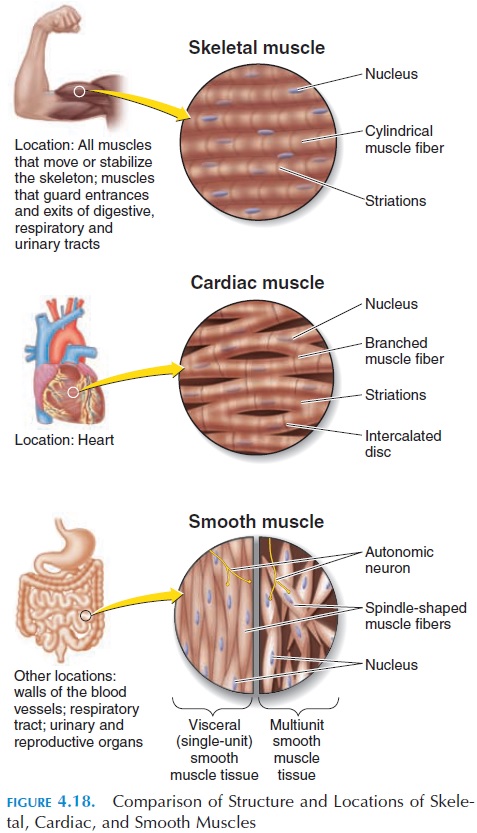Chapter: The Massage Connection ANATOMY AND PHYSIOLOGY : Muscular System
Cardiac Muscle and Skeletal Muscle
CARDIAC MUSCLE
The cardiac muscle (see Figure 4.18;) present in the walls of the heart is used to propel blood from the chambers, requiring each chamber to contract in one accord. Relaxation should also be synchronous for blood to fill the chamber. To meet these needs, the structure is altered.

Cardiac muscle is branched and has specialized re-gions on the sarcolemma where it comes in contact with the adjoining cell. These specialized regions, in-tercalated disks, contain proteins (desmosomes) that hold adjacent cells together and transmit the force generated from muscle to muscle. Intercalated disks also contain gap junctions, which are specialized channels that allow action potentials (impulses) to travel from one cell to another. Because of the pres-ence of intercalated disks, cardiac muscle is able to contract together as a functional syncytium (as if it functioned as one muscle fiber). The myosin and actin filaments are arranged in an orderly manner; and cardiac muscle, like skeletal muscle, looks stri-ated.
Because the heart must alter its force of contrac-tion according to regional requirements, its contrac-tion is not only regulated by nerves, but also by hor-mones and ionic contents of the blood among others. For example, adrenaline in blood can speed contrac-tion and calcium levels can alter the excitability and contractility of the heart. Unlike skeletal muscle that relies on a stimulus from a nerve fiber, the cardiac muscle can respond to action potentials produced by specialized cardiac muscle fibers belonging to the conducting system of the heart. In re-sponse to a stimulus, the cardiac muscle fiber re-mains contracted for a longer period (about 10 to 15 times the duration of skeletal muscle).
Cardiac muscle does not have the capacity to re-generate.
Related Topics